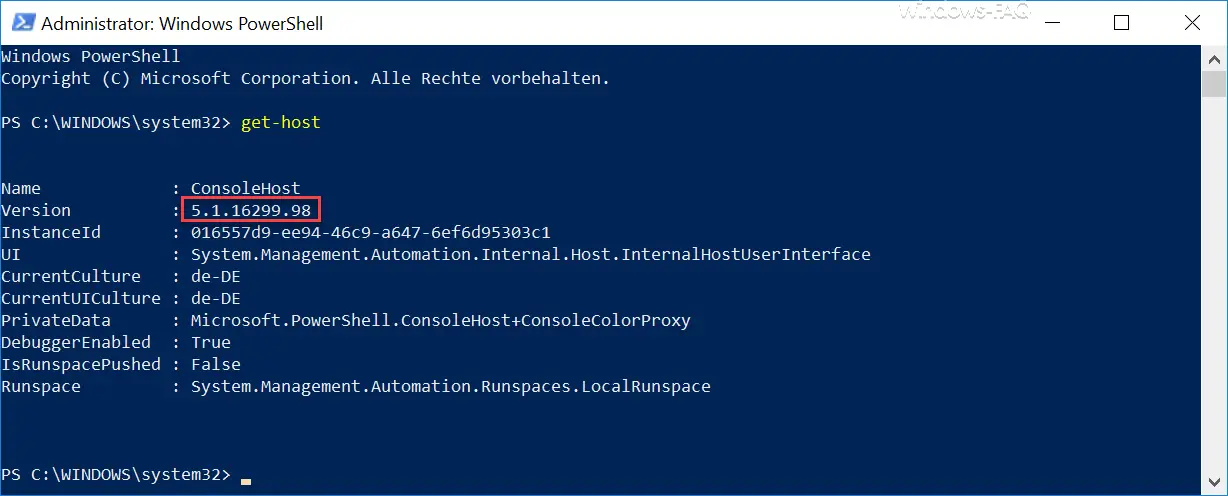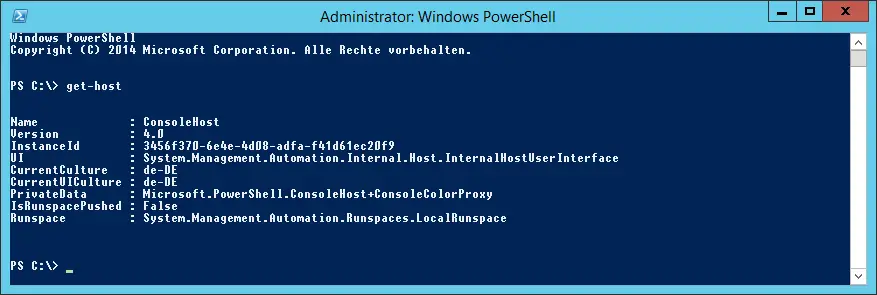A lot has happened in this area since Microsoft first delivered PowerShell with Microsoft Exchange Server 2007 in 2006 . The PowerShell has been developed by Microsoft for years and has long since replaced the MS-Dos prompt due to its complexity. Of course, every new Windows version has a new PowerShell version and every new PowerShell version has new enhancements and capabilities. It often happens to us that we want to issue PowerShell commands on PowerShell versions that do not yet support these cmdlets .
Which version of PowerShell am I currently using?
To query which version of PowerShell is currently active on my Windows system, the following command is required:
get-host
A detailed overview of the currently used PowerShell version is then displayed. As you can see below I have given you a few examples of different Windows systems :
Windows 7:

Here is the PowerShell version 2.0.
Windows Server 2012 R2:
For Windows Server 2012 R2, the PowerShell version is 4.0 here.
Windows 10 (version 1511 build 10.586.36):

Windows 10 version 1511 is currently PowerShell version 5.0.10586.0.
Windows 10 (version 1607 build 14393.577):

In the Windows 10 1607 Anniversary version , the PowerS h ell has now reached version 5.1.14393.576.
Windows 10 Fall Creators (Version 1709 Build 16299.192)

With the Windows 10 Fall Creators Update the current PowerShell version number is 5.1.16299.98 , as you can see in the picture above.
Below we have listed some other very interesting articles about Windows PowerShell .
– Replace the command prompt with PowerShell in the Win + X menu
– Find out the Windows product key using the DOS command or PowerShell
–
Query the Windows firewall using the PowerShell command, switch it on and off – Event log (Eventlog) quickly delete entries using Powershell
– PowerShell update to version 4.0
– PowerShell – List, stop and start services
– Remote session with Powershell command “Enter-PSSession”
– Work with recovery points in PowerShell
